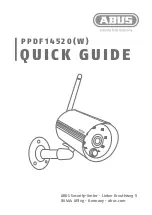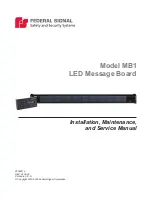
Version 1.0 rev 14 Aug 2019
29
Balor
4.5.1 R
olling
s
HUtteR
The Balor can function in what is termed Rolling Shutter operation. This describes the sequence in which successive
rows of pixels are read from the sensor array in a “rolling wave” effect. In Rolling Shutter, adjacent rows of the array are
exposed at slightly different times as the reset and readout waves sweep through the sensor. Each row will start and end
its exposure slightly offset in time from its neighbour, but each row will have experienced the same exposure duration.
The Rolling Shutter readout mechanism is illustrated in Figure 5 below.
Exposure Start
Exposure
Readout
Figure 5: An illustration of Rolling Shutter sensor exposure.
•
At the start of an exposure, the “Reset” wave sweeps through the sensor clearing any accumulated charge from
the pixels. The pixels then start accumulating light induced charge.
•
At the end of the exposure, the “Readout” wave sweeps through the sensor, transferring the charge from each
row into the readout node of each pixel.
A potential downside of Rolling Shutter is spatial distortion resulting from the above described exposure mechanism.
This has historically been more apparent in devices such as CMOS camcorders, where the entire image field could be
moved (for example by the user rapidly panning the camera) at a rate that the image readout could not match; thus,
objects could appear angled compared to their actual orientation. In reality, despite the time-offset readout pattern,
Rolling Shutter mode is appropriate for the majority of scientific applications, especially where the exposure time is equal
to or greater than the sensor readout time, discussed later.
Rolling Shutter can also be operated in a ‘100% duty cycle’ mode when capturing a kinetic series of images, whereby
after each row has been read out it immediately enters its next exposure (no “Reset” wave). The exposure time and the
cycle time are the same.
















































